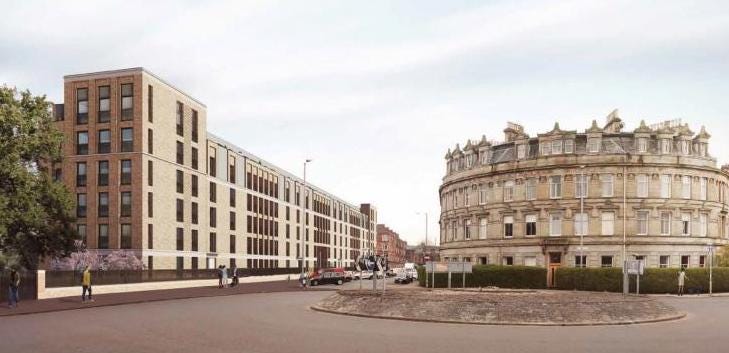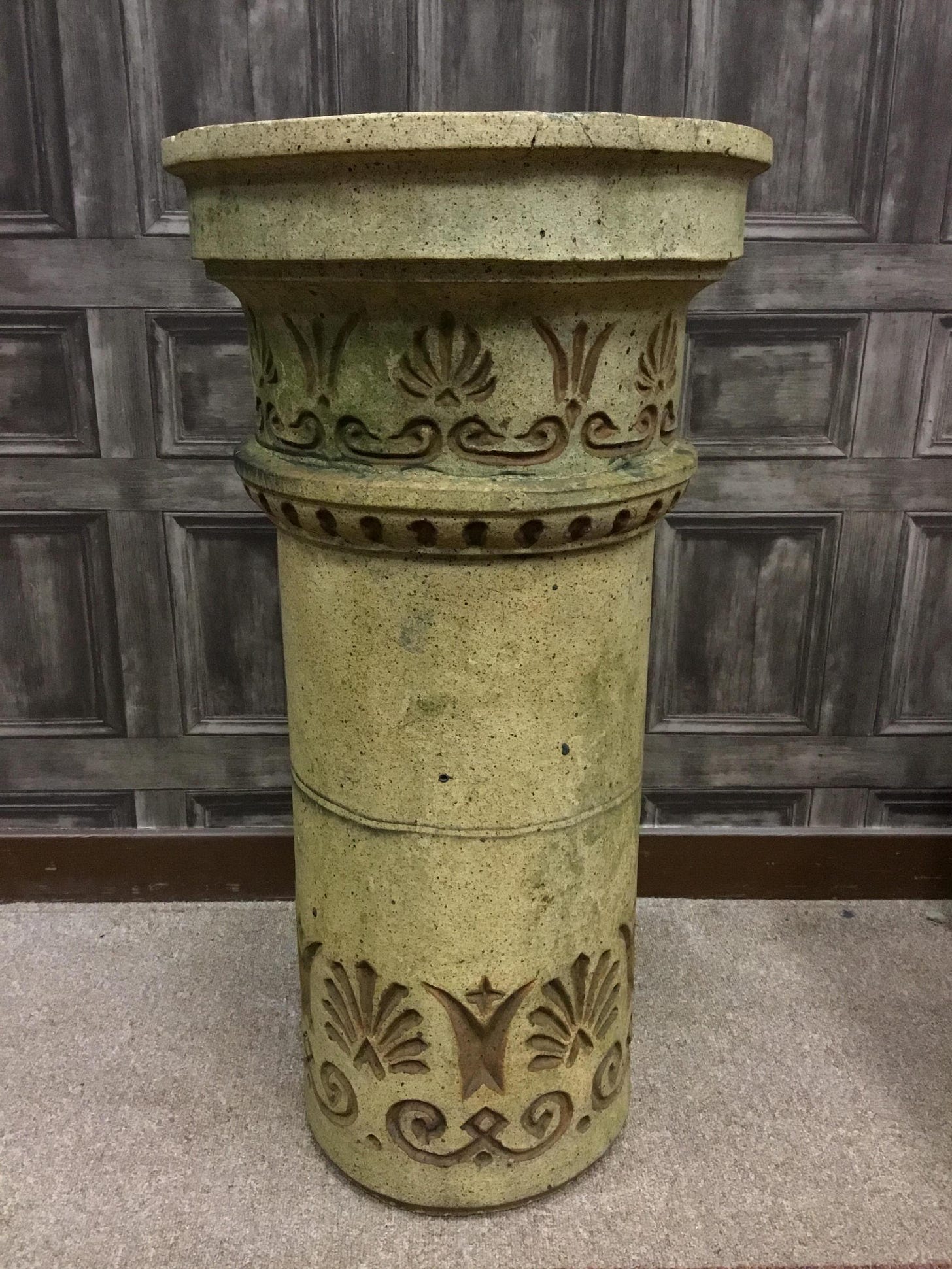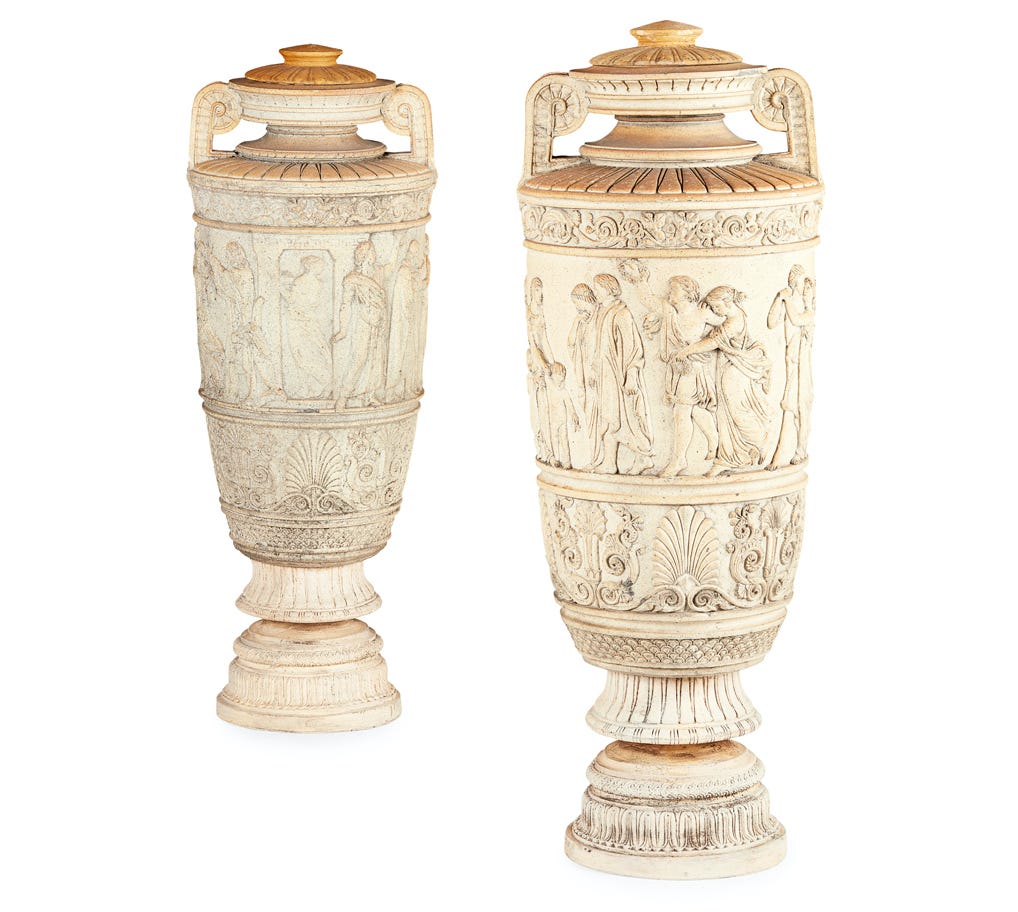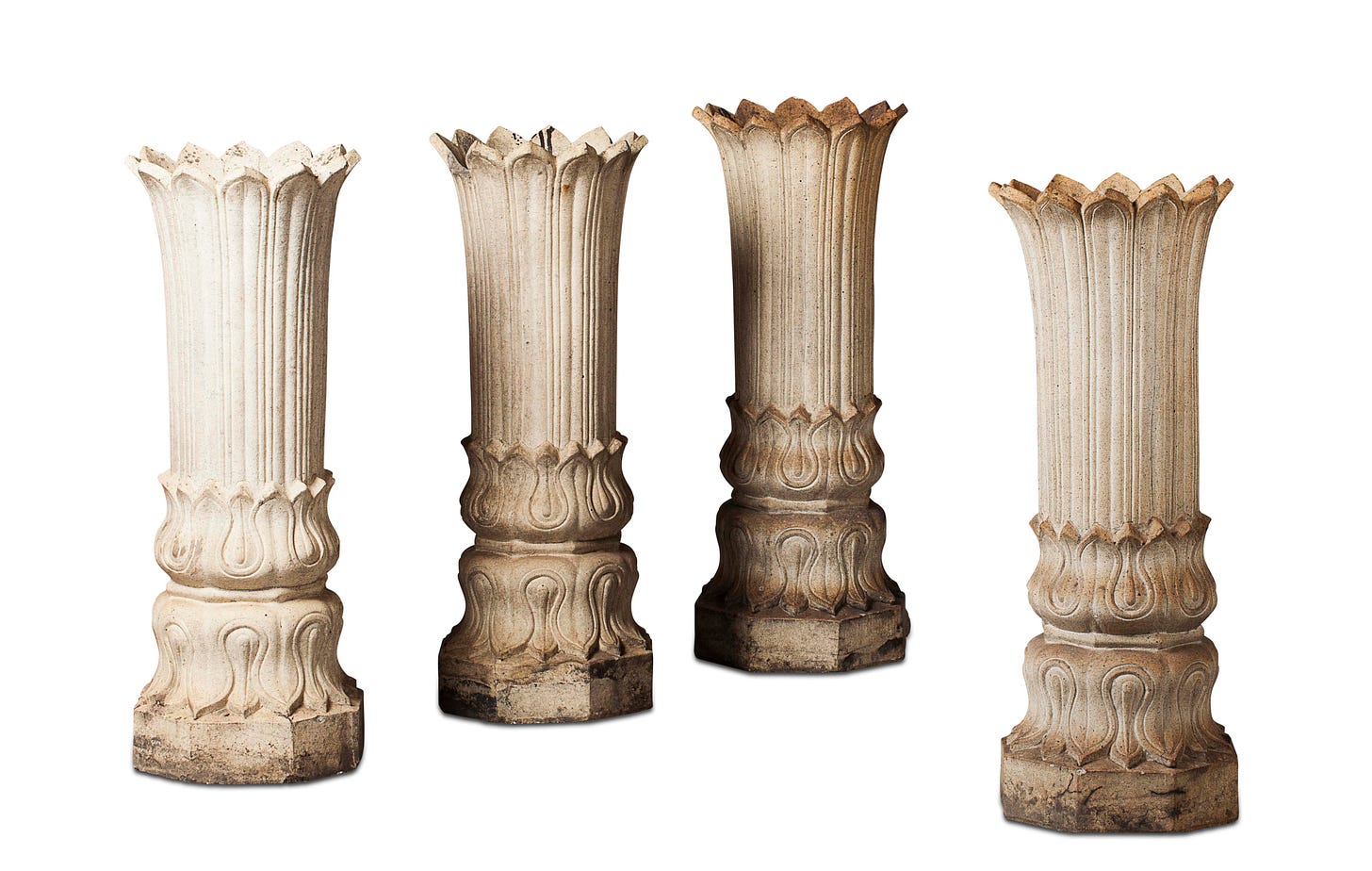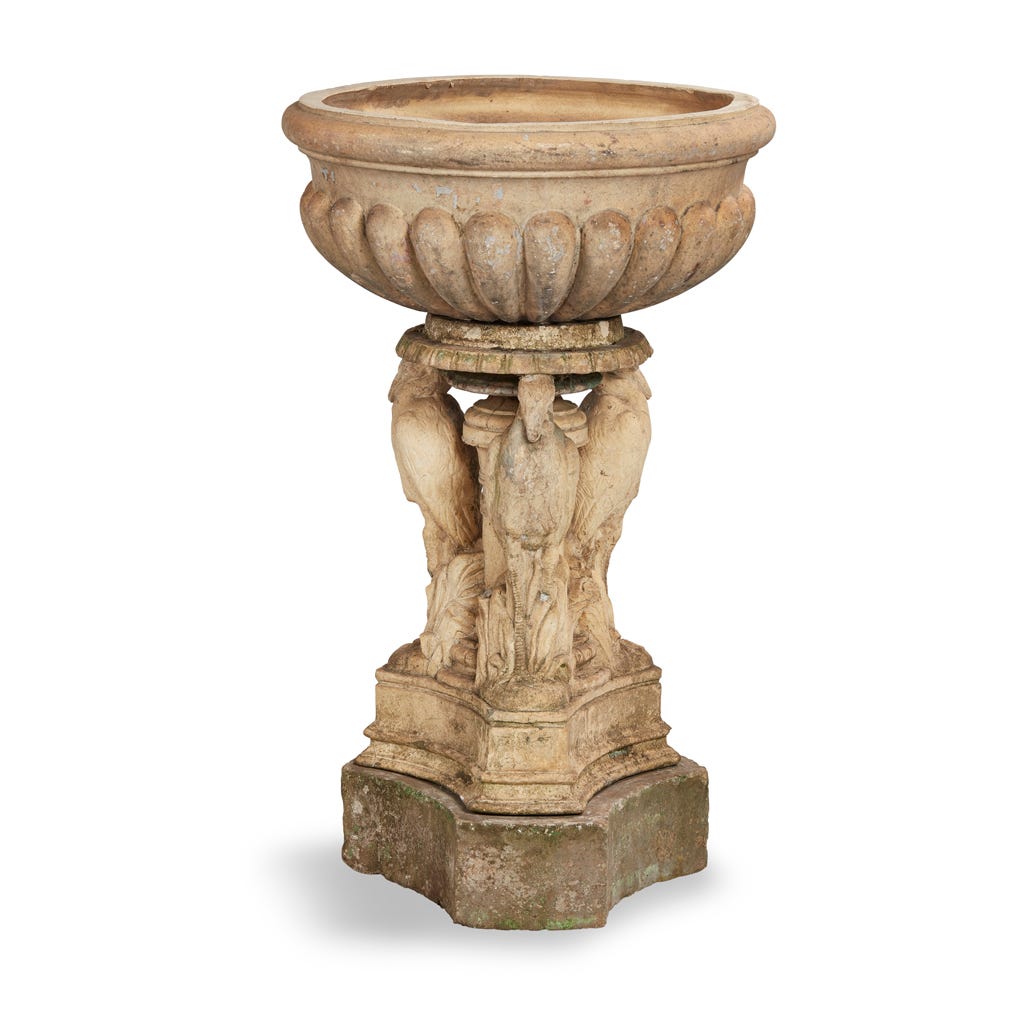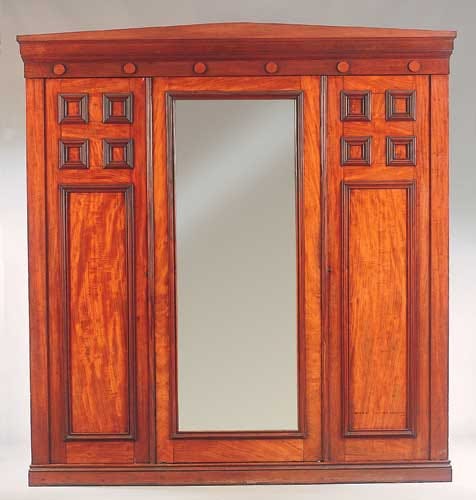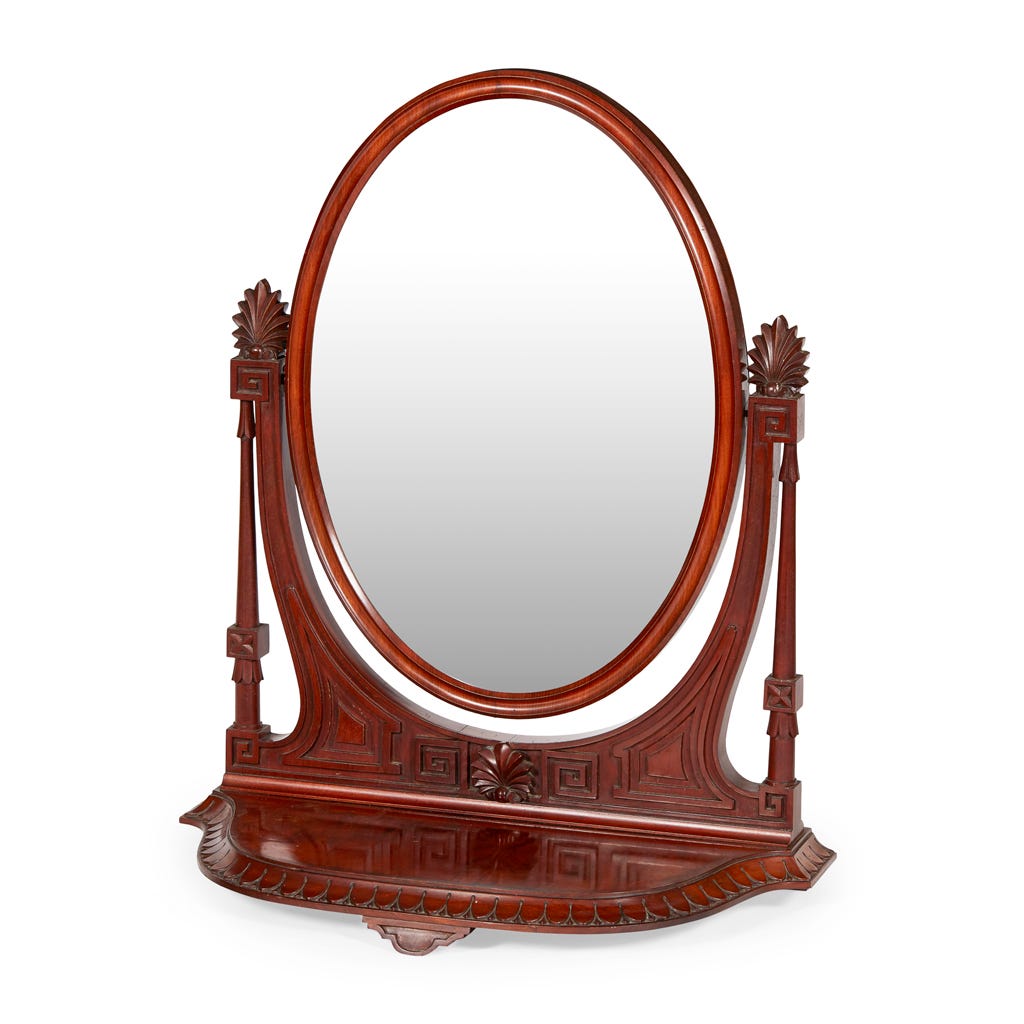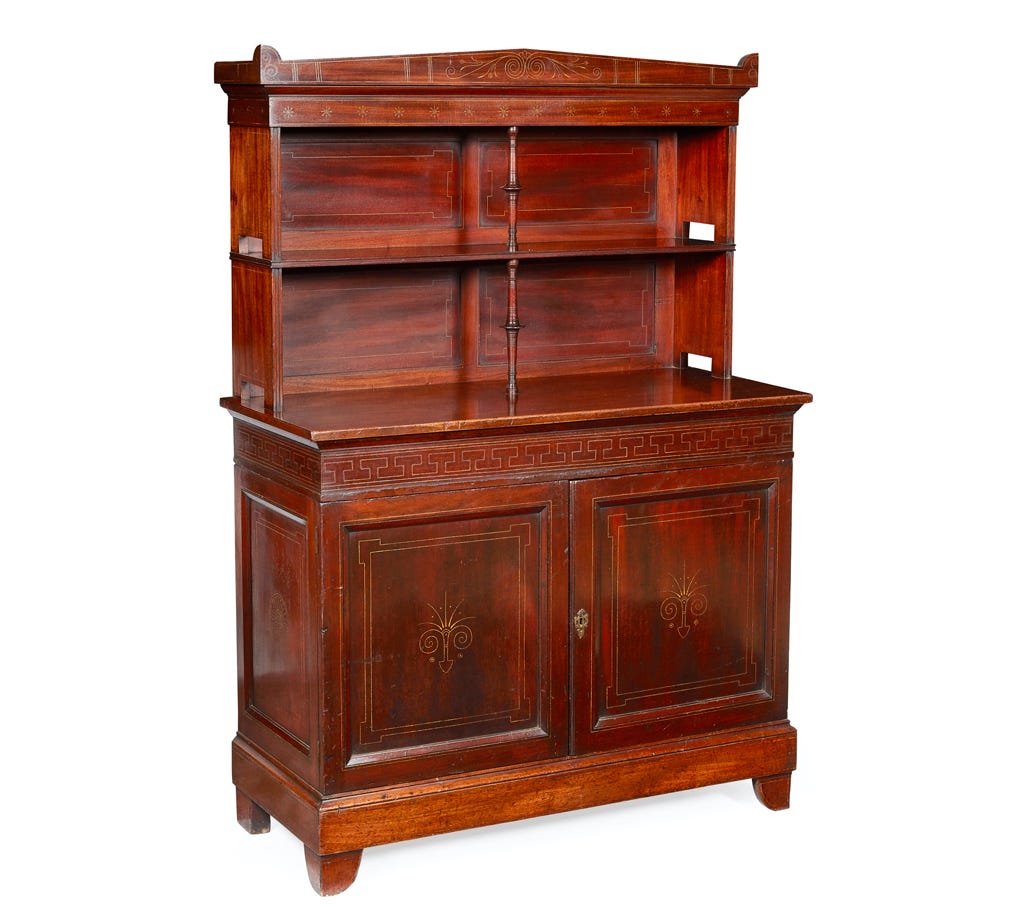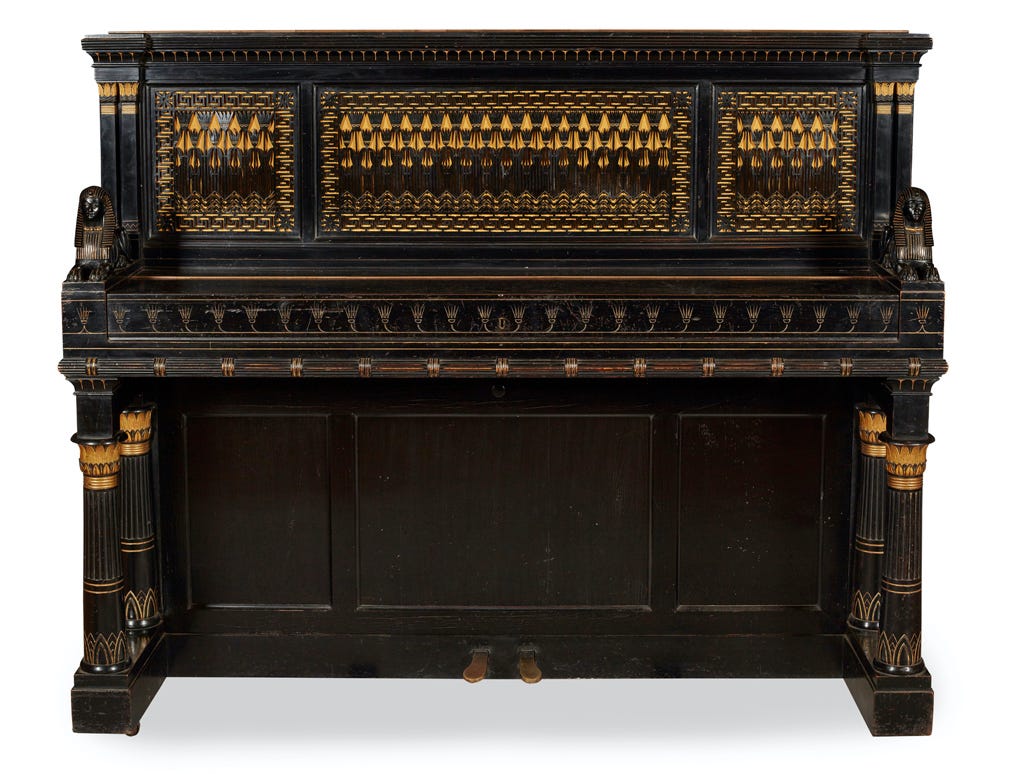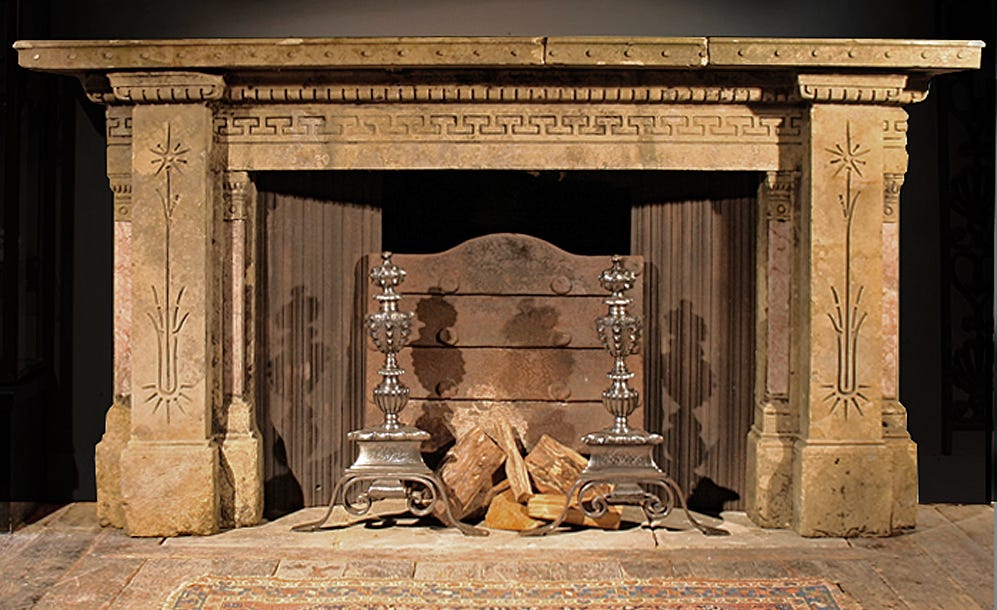Buildings by or drawing on Alexander Thomson’s designs regularly appear in the property market. Recently, ‘For Sale’ signs went up for a three-bedroom apartment at Great Western Terrace at £525,000. Another sold in July 2023 for £550,000, while Tor House on Bute was up for sale a few years ago, among others, as well as Knockderry Castle and properties in Millbrae Crescent (the former, admittedly, a disputed attribution, the latter constructed by David Thomson & Turnbull).
As for Thomson-associated properties, a proposed Page/Park development on a former Arnold Clark car dealership site is planned adjacent to Moray Place and Nithsdale Road in Strathbungo.
For something less immediately connected, you could always try for a semi-detached property in Greek Thomson Road, Balfron.
However, without going into the kinds of figures now associated with property, what else might be available?
Two Scottish auctioneers, Lyon & Turnbull and McTear’s (from whose websites many of these images are taken), occasionally feature works by or associated with Thomson. Chimney cans and ‘style of’ furniture items are the most regular items that appear for sale. McTear’s sold an 80cm tall terracotta chimney pot ‘in the style of Alexander ‘Greek’ Thomson’, which is clearly one of his designs, but whether the manufacturers were Ferguson, Miller or the Garnkirk Fireclay Company, who purchased Ferguson, Miller’s moulds in 1862, isn’t clear. McTear’s one seems to have been cut off at the base and fetched £240; a complete version sold by Lyon & Turnbull and attributed to Millbrae Crescent made £812.
A different but suspiciously Thomsonian can, but unidentified as such, was sold by McTear’s for £30.
The most expensive Thomson-related item sold through Lyon & Turnbull was a rather stunning pair of Nuptial Urns, which fetched £4,808. Again, it isn’t known whether these are Ferguson, Miller or Garnkirk (the auctioneers named them as the latter).
Lyon & Turnbull also sold four lotus flower chimney cans, which regularly feature in Thomson buildings (although other fireclay companies made similar versions), and, for £2,125, a combination piece, whose top is a standard model Garnkirk planter but whose base is the top tier of the massive terracotta fountain designed by Baird & Thomson for the 1853 Dublin Exhibition, mentioned by Scott Abercrombie in Journal No. 7.
Although a deal door removed from Rockbank, Helensburgh, in the 1960s (£500) is clearly an original, together with a tendency to spell his name ‘Thompson’, Lyon & Turnbull have sold various items described as ‘in the manner of...’, including a large, twin-handled ceramic amphora vase of ca 1850 (£562), a mahogany wardrobe (£5,250), an 1865 mahogany toilet mirror (£500) as well as a set of 13 (yes, 13) painted glass panels, ca 1880 (£750).
A Daniel Cottier drawing room cabinet of around 1870 is another work that clearly reflects Cottier’s involvement with Thomson in Glasgow.
The auction notes state, ‘The simple lines and painted decoration of this cabinet are consistent with other cabinet furniture produced by Cottier around this time’. The recent publication on Cottier1 focuses more on his painted and ebonised furniture, and this item seems much more in keeping with what little we know of Thomson’s furniture for Moray Place, such as the cabinet now in Kelvingrove Art Gallery & Museum, so may in fact be earlier.
Lyon & Turnbull also sold an Egyptian Revival piano of ca 1878 by William James and George Ashdown Audsley, the Elgin-born brothers who followed Thomson’s architectural and design principles for some years in Liverpool, New York, and Milwaukee.
The piano was made by Wm H and G H Dreaper of 96 Bold Street, Liverpool who (if street numbers have not changed) were two doors away from the Thomson-inspired shop constructed by the Audsley brothers at No. 92. This, or a similar model won a bronze medal at the 1878 Paris Exposition Universelle. It sold for £7,500.
For those with more expensive tastes, the Audsleys’ sandstone chimneypiece for the former Liverpool Racquets Club is based on the design in Village & Cottage Architecture used at Holmwood House. This one has ‘rouge royale’ marble detailing. The Club was burned down in the Toxteth Riots of 1981, but the fireplace was rescued. Lassco have it on offer for a somewhat extraordinary £26,350, even given the repairs that would be needed, but I suspect they are open to substantially discounted offers.
For those who might prefer to own something by the King’s Sculptor in Ordinary in Scotland, one of Sandy Stoddart’s limited edition 1993 plaster medallions of Thomson was sold by Lyon and Turnbull in 2018.
For something smaller, you could try silverware by George Cooper (1689-1765), the Aberdeen silversmith who was Alexander Thomson’s great-grand-uncle.
Examples need not be expensive: book illustrations of etchings by Michael Angelo Nicholson (removed from a book, unfortunately) can be found for under £30, and a Glasgow Institute of Architects medal, designed by Thomson but not dated or otherwise inscribed, was on sale this week in a Glasgow antiques shop for £15.
Also, although we have not any confirming evidence to date, Thomas Gildard, in his writings after Thomson’s death, mentioned Thomson’s involvement in book design. These were probably for Blackie & Son but could have been for other Scottish publishers. Although the period for such work could be expected to be around 1850 to 1875, some of those designs could well have continued to be used in the decade after his death. Some possible examples are shown below.
Care must be taken, however: in 2017, McTear’s sold two etchings for £180 by ‘Alexander P Thomson’, whose dates were given as 1817-1875. Unfortunately, one etching features Glasgow Cross railway station, which didn’t open until 1895, and Alexander P Thomson, RSW, was not, in fact, born until 1887.
P Ten-Doeschatte Chu, M Donnelly, Daniel Cottier: Designer, Decorator, Dealer, Yale, 2021





